Final Product
Concept
Location: Sihui’s memories
For this video project, I decided to choose someone else’s (Sihui’s) memories as a location I’ve never been to. The narrative of this video revolves around what a regular day is like working as a filter in Sihui’s hippocampus; looking through her day’s worth of memories and picking out ones she should remember and ones she should forget. Given the fictional nature of this location and narrative, I tried to use literal images and sounds to better depict the location and avoid confusing viewers. The video comprises of two main environments – the hippocampus and the memories themselves. This is emphasised through the use of different mediums, namely, digitalised illustrations (representing the hippocampus) and moving images (representing the memories). The video also comprises of a soundscape as a factor to bring life to the fictional location. The two main soundscapes used are the sounds that exist within the hippocampus, and those derived from the memories themselves.
Techniques Applied
I. Hippocampus
To represent the hippocampus, I used illustrated GIFs (each with a few select moving elements). In addition to using a contrasting medium (i.e. illustrations) to represent the hippocampus as a fictional location, I kept to the same colour palette for all illustrated frames. Doing so helped in establishing a sense of continuity, showing that the scenes are all occurring within the location. The use of pink and purple tones are also to give more obvious representation of the location, showing the insides of a brain.
Sounds used:
| Steam locomotive engine | Freesound.org |
| Going over railway tracks | Fries shaking in a bag (foley) |
| Low rumbling | Freesound.org |
With regards to the overarching sound, I used a toned-down soundscape with sounds from a steam locomotive engine, it travelling across a railway track, and low rumbling, to establish the sense of movement occurring outside the hippocampus; showing Sihui going about her day while I’m carrying out a filtering process on her memories.
In addition to using sounds from the Internet, to recreate the sound of a train going across railway tracks, I used foley where I held a recorder in between two bags of fries while Esther and Sihui shook them at varying times.
Frame 1
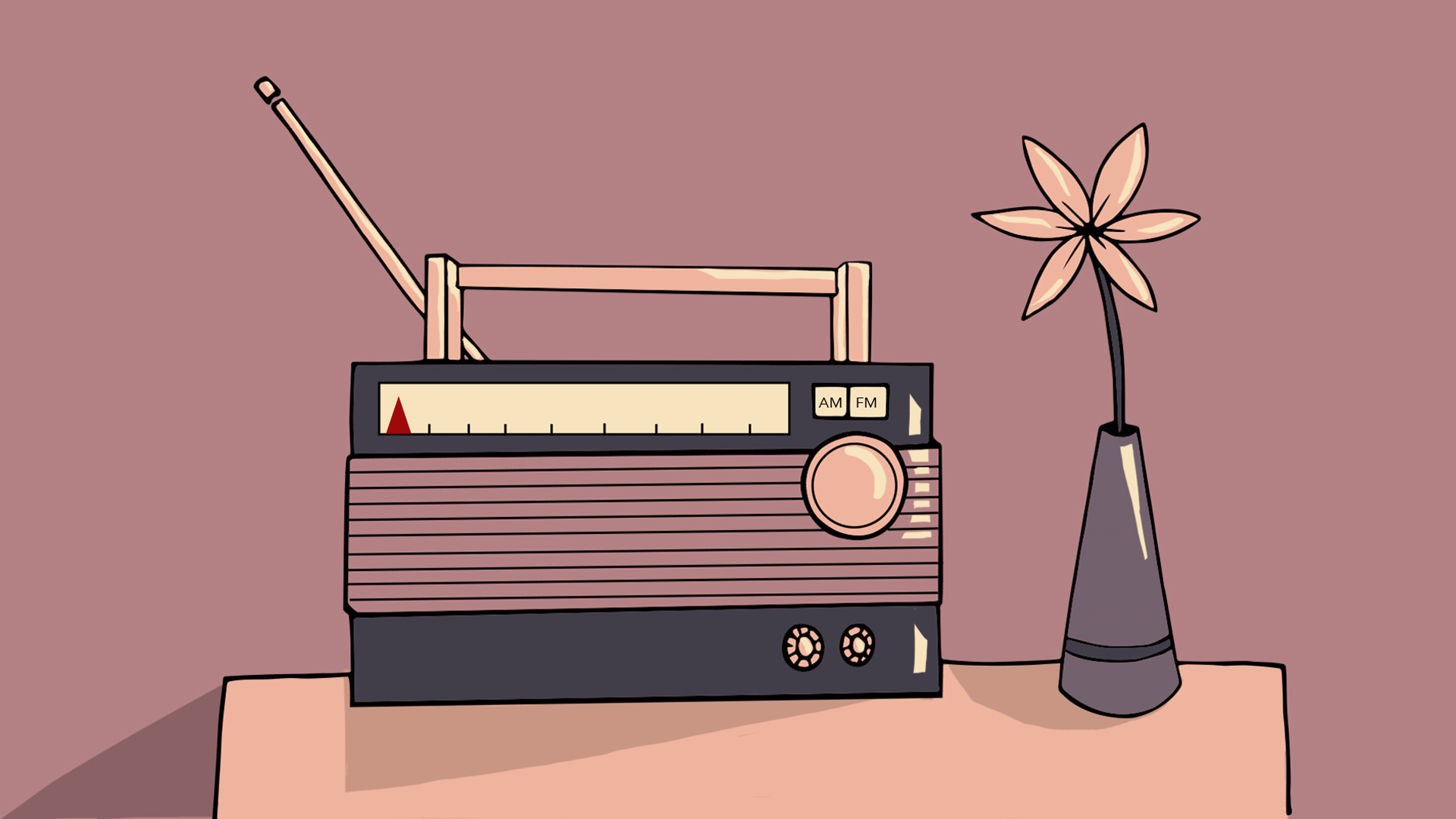
The first frame was meant to convey the start of the work day – switching on the radio, then switching through different channels and finally coming across the perfect the song.
Sounds used:
| Radio channel | Freesound.org |
| Radio static | Freesound.org |
| Music | Stardust by Hoagy Carmichael |
To establish a sense of rhythm, I chose to lay the frames out in the video according to the beat of a song in the background. The song in the video is Hoagy Carmichael’s Stardust, chosen mainly for its slow rhythm and calm mood. Having this particular song as the main background music helps in establishing a sense of rhythm and an ambient mood, preventing clashes with the other environmental sounds. Additionally, I chose objective sounds to convey a clearer narrative; radio static and noises to show the switching of radio channels.
Frame 2
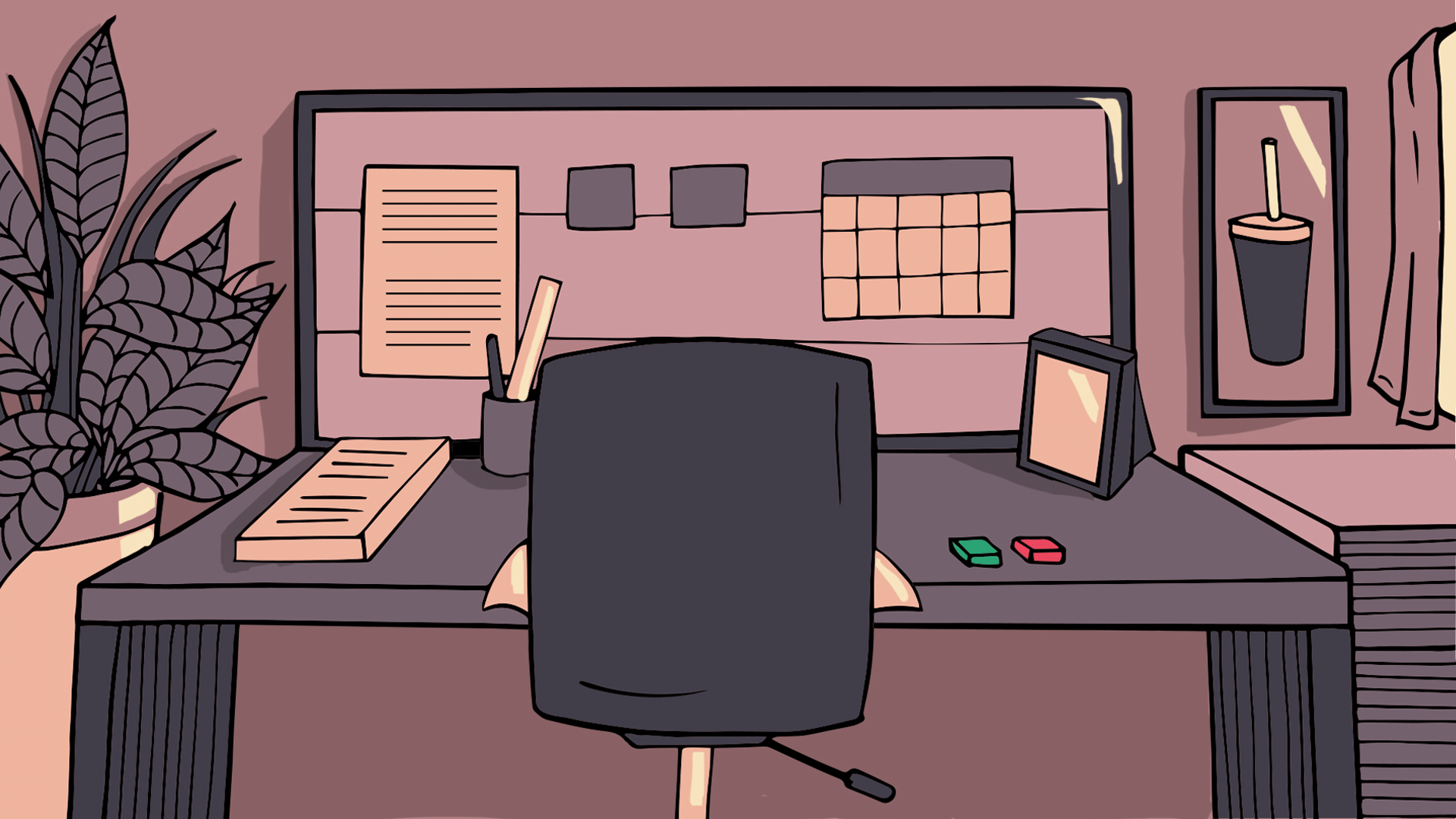
The second frame is meant to depict the main workspace of the hippocampus, a typical desk area with papers and stationery. To reinforce the portrayal of the job as a memory filter, the desk has two glowing buttons (one green and one red) to represent the forget and remember functions when filtering through the memories. Laid over the background sounds of music, the steam locomotive engine, and rumbling, there is the addition of other objective sounds to reinforce the activities occurring around the main workspace.
Sounds used:
| Steam | Freesound.org |
| Drawers opening and closing | Freesound.org |
| Things moving | Freesound.org |
In addition to using objective sounds to establish the environment, I varied the intensity of the two different sound groups (the environmental sounds of the current scene and the background sounds of the travelling locomotive) – the environmental sounds of the current scene being louder – to reinforce the close distance of the workspace as opposed to the travelling sounds, which are occurring outside the confines of the area.
The use of the two sound groups occurring simultaneously also reinforces the narrative, allowing the viewers to better experience the space they currently are in and the environment going on outside.
Frame 3

The third frame portrays a close-up of the workspace, showing a top-down level shot of the items on the desk. To progress the narrative, slowly revealing whose memories are currently being filtered, there is a dossier with a portrait (of Sihui) attached, along with stationery, documents, and an iPad (with a blinking notification signalling the start of the filter process), as well as the addition of a cup of coffee and half-eaten biscuits.
Sounds used:
| Flipping through pages | Freesound.org |
| Spoon hitting the edges of the cup | Freesound.org |
| iPad unlocking | Freesound.org |
Similarly, the environmental sounds of the current scene are laid over the background sounds, occurring simultaneously, with it being higher in intensity as compared to the background sounds, attempting to achieve the same effect in providing a better viewer experience.
Frame 4

The fourth frame is a title sequence, an attempt to clearly convey the location through introducing the stage of the job.
Frame 13
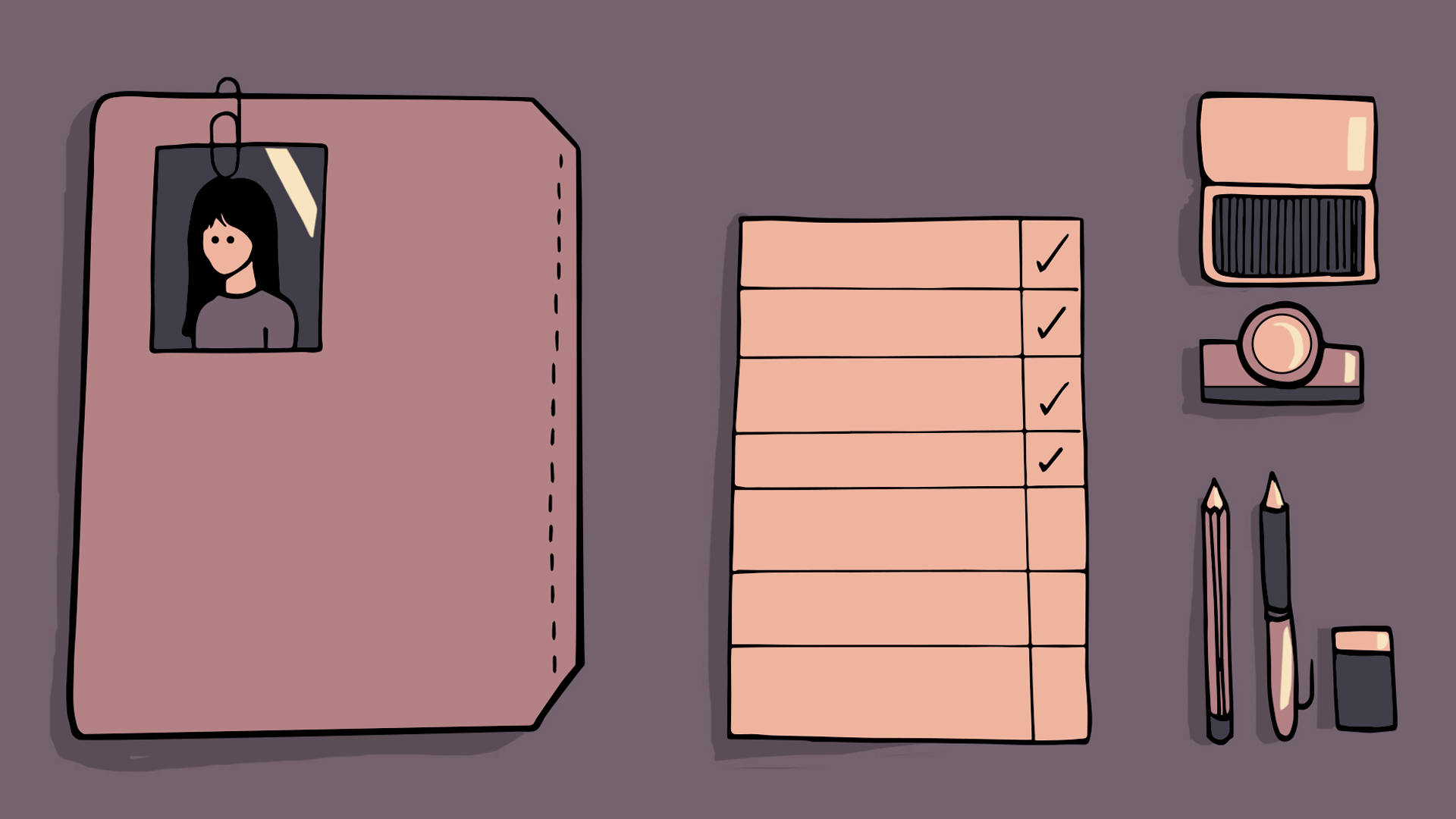
The thirteenth – and final – frame is meant to depict the end of the day’s work and completion of filtering through the day’s memories, where a list of items is being checked, with the word ‘COMPLETED’ being stamped across Sihui’s dossier.
Sounds used:
| Writing on paper | Freesound.org |
| Stamping | Freesound.org |
This scene also uses objective sounds to accompany the visuals of a list being checked off and stamping the word ‘COMPLETED’ onto the dossier. In an attempt to match the visuals, I chose to delay the stamping sound until the end, after the writing sound finishes.
II. Memories
Heading into the second portion of the video which shifts the focus to portraying Sihui’s actual memories, the medium changes to cinemagraphs.
‘Cinemagraphs are still photographs in which a minor and repeated movement occurs, forming a video clip. They are published as an animated GIF or in other video formats, and can give the illusion that the viewer is watching an animation.’ Using cinemagraphs help in better conveying the subjects as memories. This is to, in my opinion, emulate the nature of memories, where usually an element is often most significant (and remembered) as opposed to the entire environment and factors in the background.
The main soundscape, similar to the previous scenes discussed, uses objective sounds (to represent what is happening the current scene) laid over the background sounds (the travelling locomotive and writing sounds). The two varying soundscapes are also used to emphasise diegesis and the use of on-screen and off-screen spaces; having sounds to establish the environment currently on-screen, but also having the previous sounds (with a lower intensity) in the background to remind the viewer that this is still occurring within the confines of the hippocampus.
Frame 5

The fifth frame shows Sihui’s typical morning routine, brushing her teeth. The element chosen to animate is the running water from the tap. The objective sounds used are to establish the environment of a toilet, along with Sihui’s interaction with the sink and toothbrush.
Sounds used:
| Clearing throat | Freesound.org |
| Running water | Freesound.org |
| Brushing teeth | Freesound.org |
Varying intensities are used (in terms of the on-screen and off-screen sound groups), as well as duration, where sounds (such as the brushing of teeth and clearing of throat) are structured in such a way that it conveys the linear narrative of turning the tap on, rinsing the toothbrush, followed by the brushing of teeth.
Frame 6
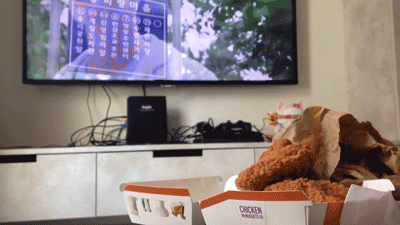
The sixth frame depicts Sihui having some lunch, with the animated element being the Korean soap opera shown on the television. The objective sounds used in this scene are put together to establish a quiet home environment with nothing but Sihui rummaging through paper bags to get food and napkins, and chewing on chicken wings while watching her favourite soap operas.
Sounds used:
| Korean soap opera | Recording of Korean soap opera (foley) |
| Chewing | Recording of Sihui chewing nuggets (foley) |
| Paper bag rustling | Freesound.org |
Varying intensities are used in on-screen and off-screen sounds, as well as to convey varying shot distances. This is especially so in the chewing noises being the loudest and the television noises being the softest – doing so helps with the viewer experience, allowing them to experience what Sihui herself is currently doing (i.e. eating).
Frame 7
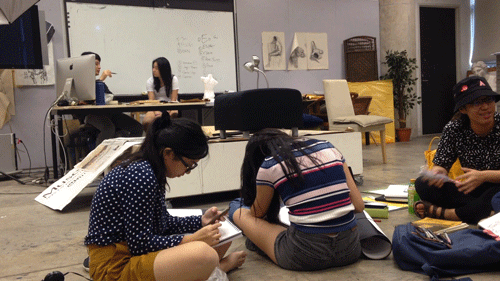
| Classmates talking | Recording of classmates talking (foley) |
| Lecturer talking | Recording of lecturer talking (foley) |
| Pencil case being thrown around | Case being thrown from hand to hand (foley) |
The seventh frame depicts what Sihui sees during a regular class in ADM (Foundation Drawing, in this case). The animated elements here are Esther tossing her pencil case from hand to hand, En Cui cracking her knuckles, and David talking to Clara. The objective sounds used here establishes the environment of a typical consultation lesson during our Foundation Drawing module; groups of classmates and David talking in the background, and fidgeting or things being moved.
Varying shot distances is used again in the sense that the sound of David talking is the softest (reinforcing the source as being the farthest), followed by class
Frame 8
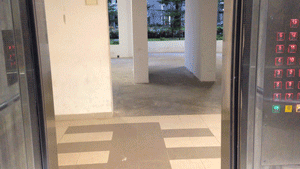
| Elevator door closing | Freesound.org |
The eight frame shows Sihui travelling to school, with the animated element being the elevator doors closing. The main sound used here is the elevator moving followed by its doors opening.
Frame 9
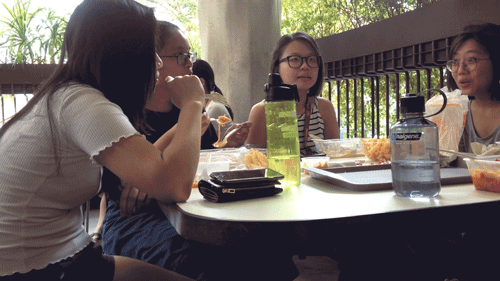
| Friends talking | Recording of friends talking (foley) |
| Chewing | Recording of Sihui chewing nuggets (foley) |
| Buzzer | Freesound.org |
| Crowd | Recording of crowd noises at a food court (foley) |
The ninth frame represents what Sihui experiences during a regular lunchtime with friends. In this frame, the animated elements are Jiayi chewing her food and the water (inside the two water bottles) moving. The soundscape in this scene comprises of the main sounds most prominent when having lunch at The Hive with friends; random conversations, chewing noises, and the buzzer from the pasta stall that goes off when your number is called.
Varying intensities are again, used to establish varying shot distances – the closest being chewing noises and occurring conversations, followed by crowd noises, and the distant buzzer at the very end.
Frame 10
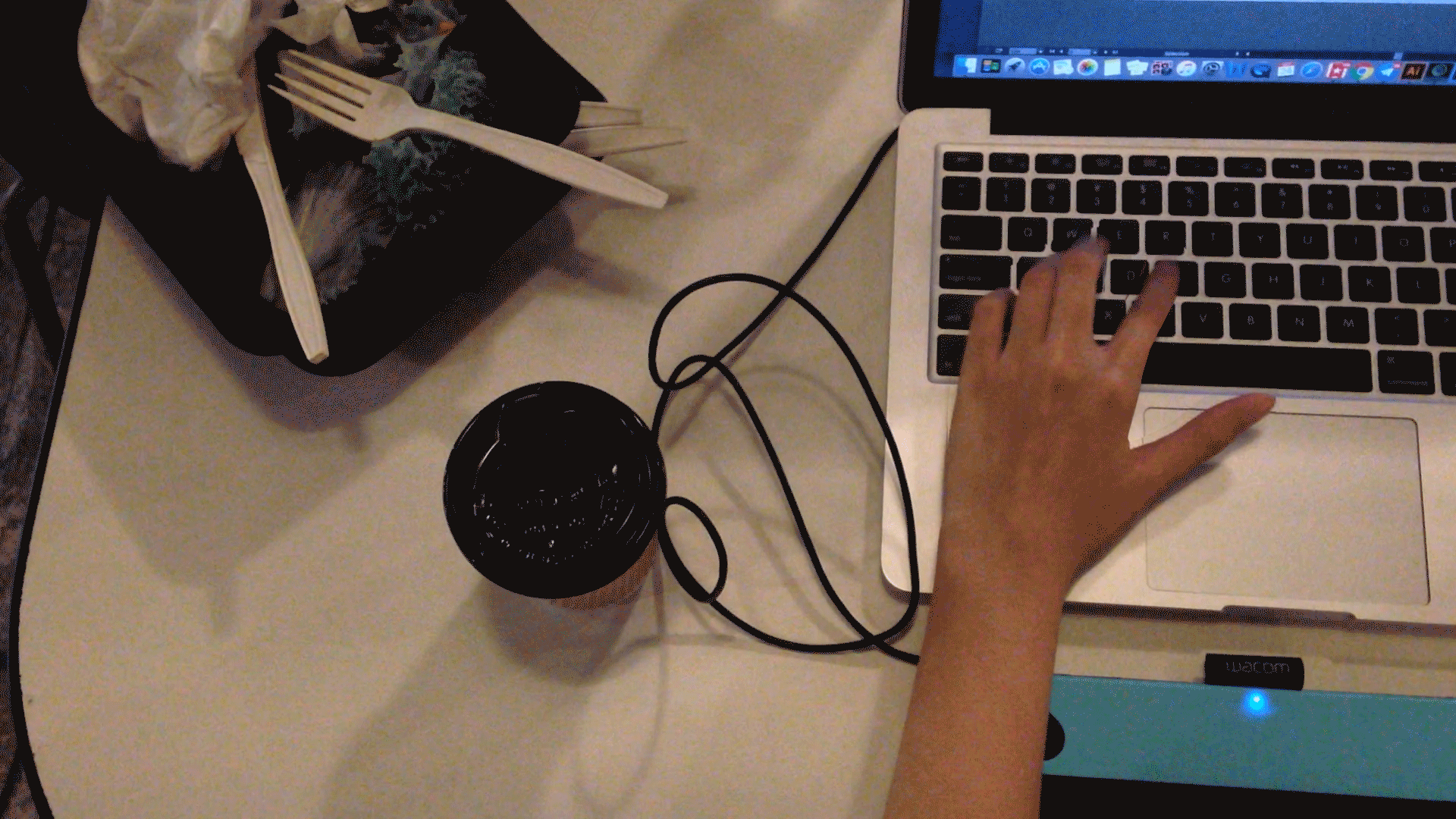
| Keyboard typing | Freesound.org |
The tenth frame shows a typical moment in Sihui’s day-to-day routine, catching up on some work for school. The animated element in this scene is her fingers typing on a keyboard.
The main sound used in this soundscape is the sound of typing on a keyboard. It is especially loud in comparison to other sounds in this scene to reiterate the idea of the typing being the closest source.
Frame 11
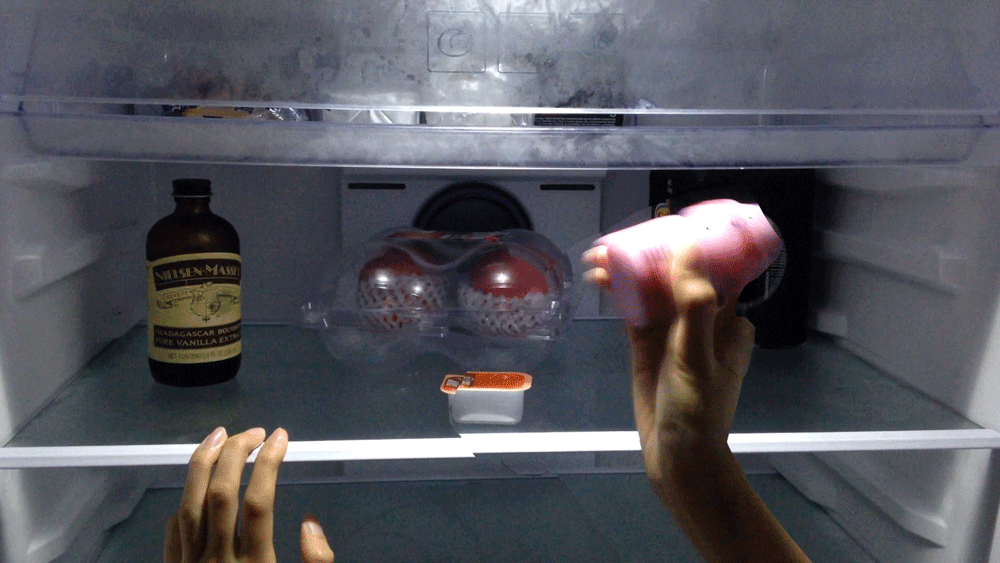
| Fridge buzzing | Freesound.org |
| Drink shaking | Freesound.org |
The eleventh frame is also another depiction of a typical scene in Sihui’s day-to-day routine, finding some food to snack on. In this scene, she is seen shaking a bottle of Yakult, the only animated element in the frame. The soundscape here is made up of a low buzzing sound (to mimic the sound of a fridge buzzing) and a bottle of water being shaken.
Varying intensities are demonstrated in the buzz being the softest and the bottle of water shaking being the loudest.
Frame 12
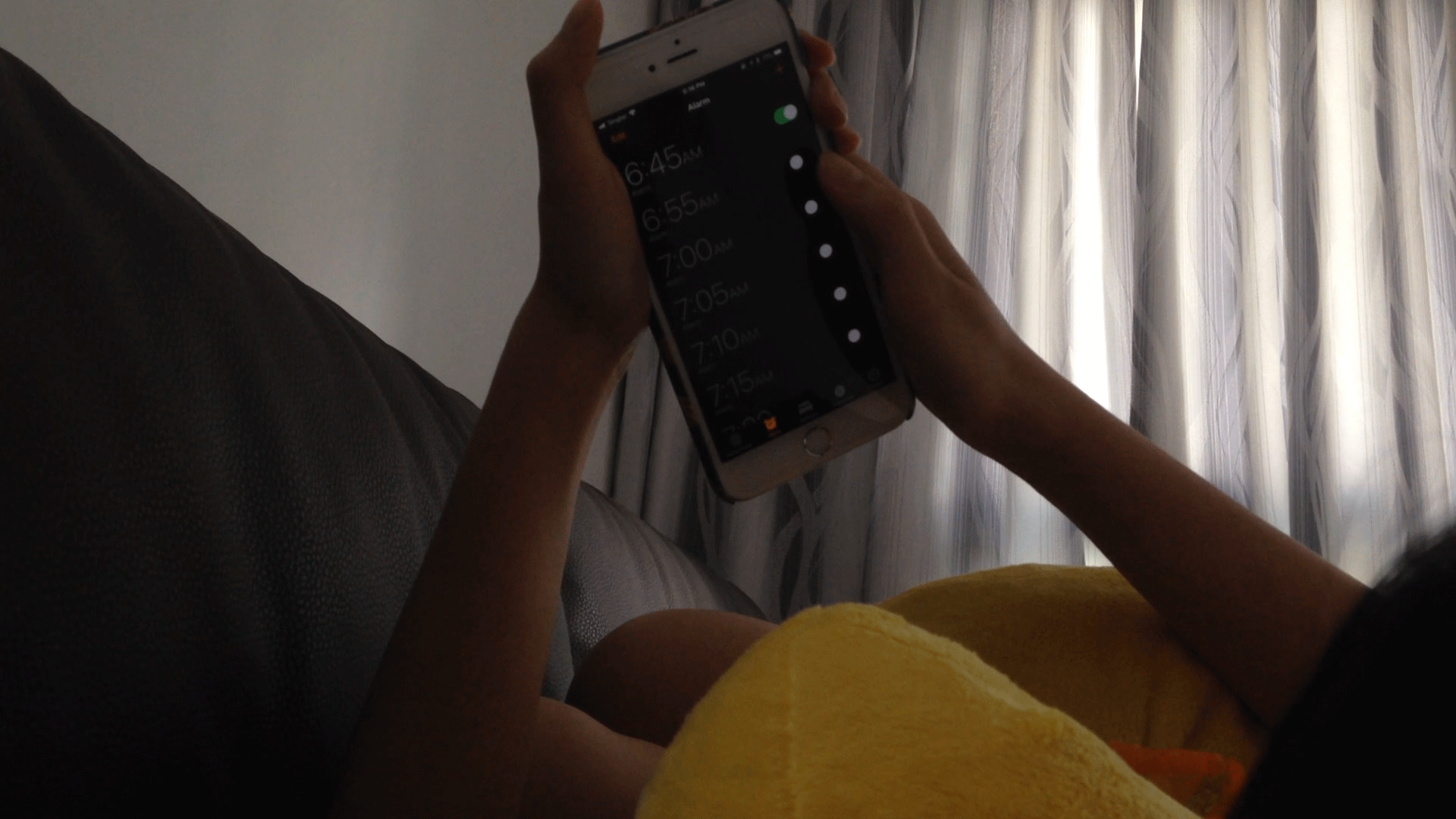
| Bed sheets shifting | Freesound.org |
| iPhone keyboard clicking | Freesound.org |
In the twelfth scene, it shows Sihui about to take a nap, before that, setting numerous alarms on her phone. The animated element in this scene is her phone screen and the widget moving as she sets her alarms. The soundscape here comprises of two main sounds; the sheets of the bed being shifted and the default iPhone clicking noise, establishing the environment Sihui experiences when taking a nap in her home.
Process
Research & Reference
Aiming to have a literal representation of the fictional location of someone else’s memories and with a narrative in mind, I wanted to see what techniques and approaches I could adopt in creating a more ‘cinematic experience’, allowing viewers to be able to experience the space.
References
I. Anything by Hans Zimmer
Hans Zimmer is a German film composer and record producer who has been dominating Hollywood with his sharp musical talent since the late 80s. To this date, Zimmer has provided music to more than 50 films, many of which are acclaimed; ‘The Gladiator’, ‘The Lion King’, ‘Inception’, and many more. Having worked with big Hollywood filmmakers, Zimmer possesses the ability to add an ‘epic’ feel with his score full of orchestral operatic sounds, with an integration of electronic touch.
The video above discusses how he manages to add a layer of intensity to the soundscape in 2017’s Dunkirk, through the simple recording of a ticking of a watch.
Learning Points:
- The emphasis of simple sounds to create tension
- The effect of varying intensities on establishing tension
- Auditory hallucinations and ‘shepherd tones’
- Varieties of ambient sounds
II. Car Chase Terror ! by M83
M83 is made up of Frenchmen Anthony Gonzalez and Nicolas Fromageau, and is known for their luscious blend of shoegaze aesthetics, ambient pop, and progressive textures. In this particular song from the album Before the Dawn Heals Us, it uses a narrative accompanied with music, rhythm and ambient noises.
Learning Points:
- Varying shot distances to emphasise movement
- The use of music and the increase and decrease of volume to emphasise tension
III. Romantic Works by Keaton Henson
Keaton Henson is an English folk singer, visual artist, and poet, having released six studio albums as well as a wordless graphic novel, Gloaming. In his 2014 album, Romantic Works, it comprises of instrumental music featuring collaborations with cellist Ren Ford. Similar to the above track, I was particularly intrigued by Elevator Song because of its combination of music and ambient environmental sounds to establish a mood; in this case, the track gives off an aura of melancholia through the use of music (cello), footsteps, water, and voices in an elevator.
Learning Points:
- Combination of music and ambient noises to establish mood
Little Videos
I. Collaboration, Wes Anderson and H&M
Watching this video inspired me to use the idea of a train to show movement and the sense of travelling.
II. Blue Train Lines by Mount Kimbie
Learning points:
- Methods of filming
- Use of rhythm to structure the appearance of images
- The title sequence
Storyboards & Drafts
Conceptualising
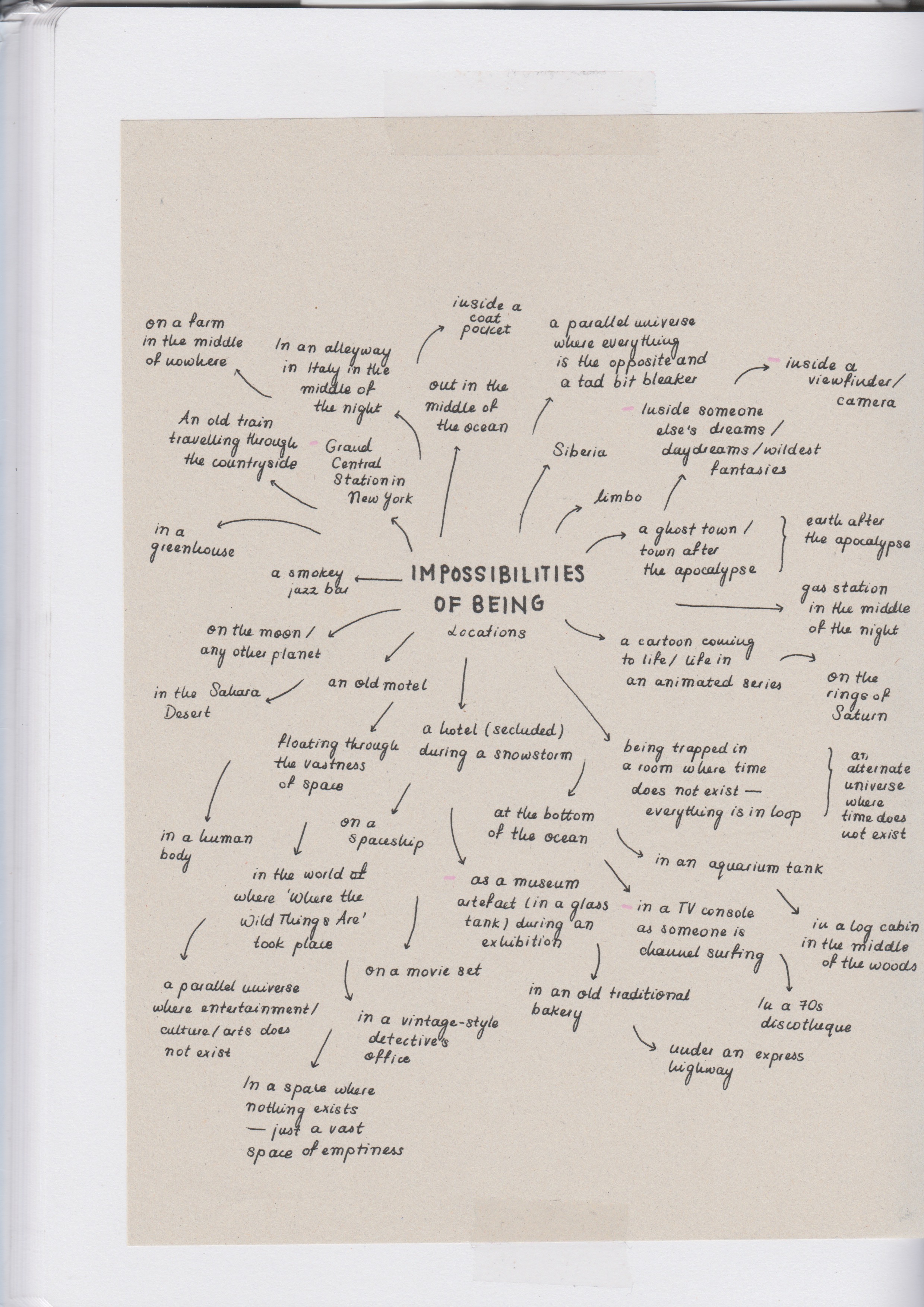
The conceptualising process included brainstorming for places that I have never been to, both literal and abstract, followed by expanding more on those ideas by imagining a soundscape along with them. After thinking and developing more on narrowed down choices, I found using abstract places more appealing as in addition to more room for experimentation in ideas and techniques, it was also subjective, opening them to interpretation.
Storyboarding
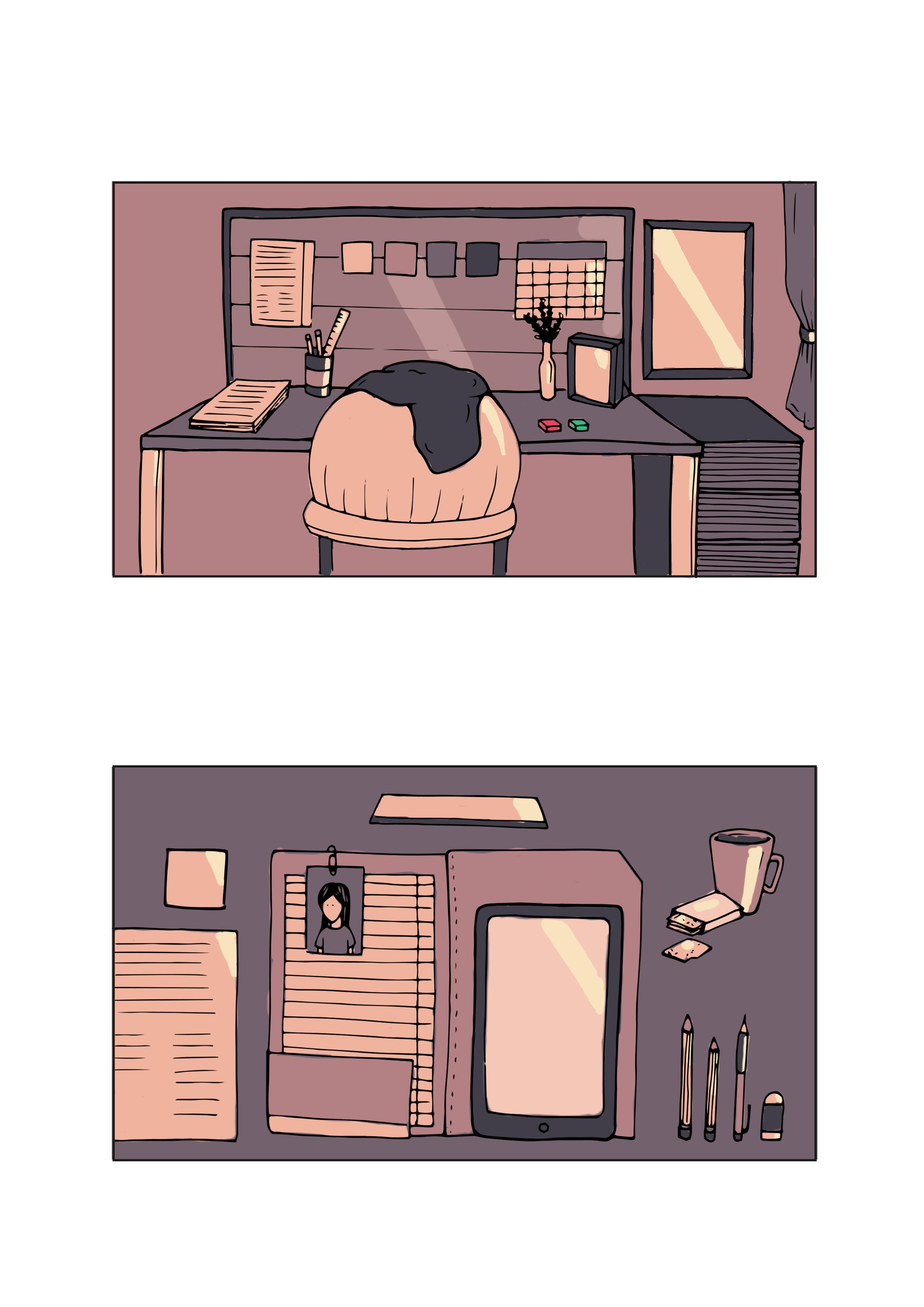
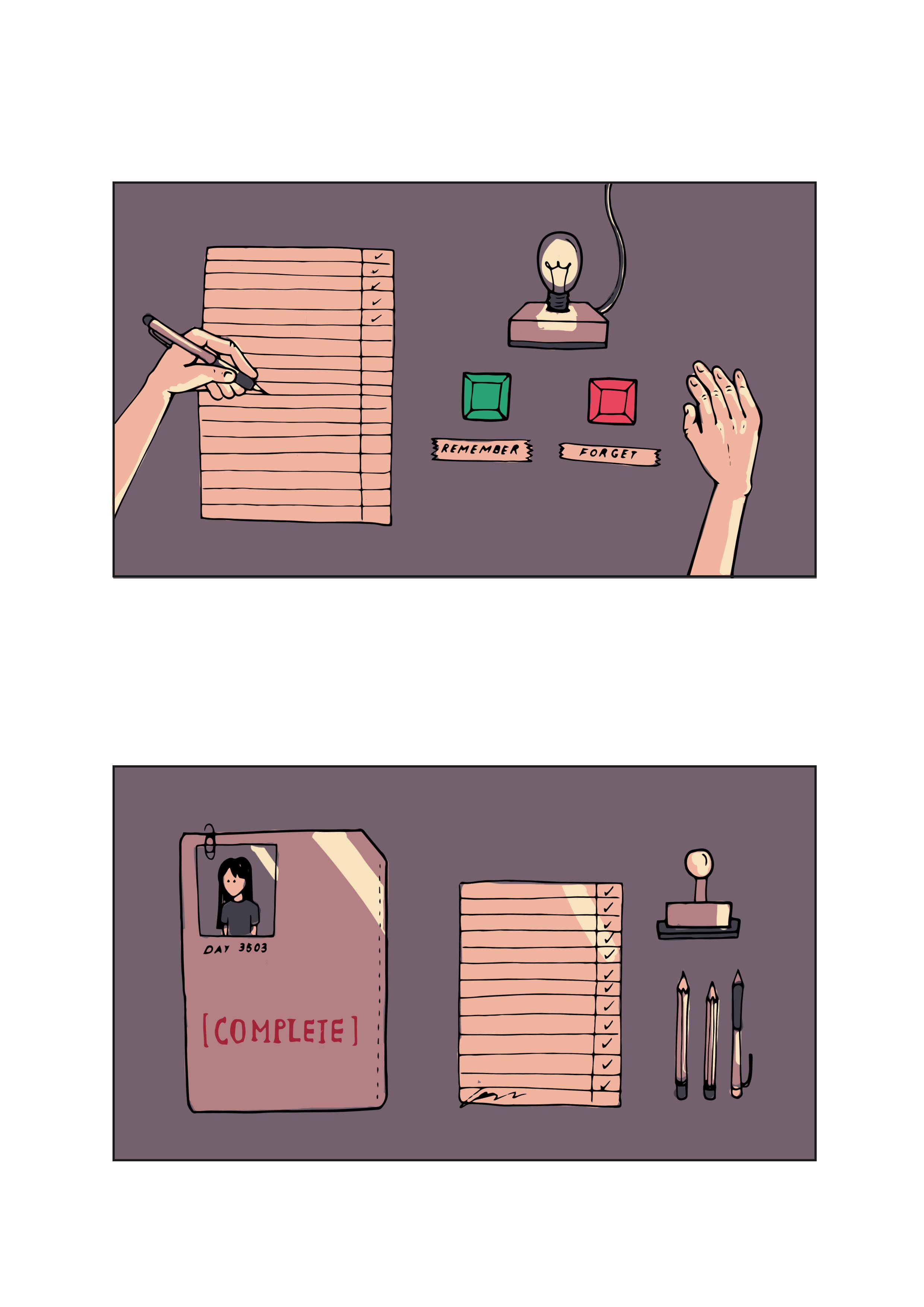
Drafts
The process of capturing the videos to create the cinemagraphs included taking still videos with the help of a tripod. The videos taken for the final product were captured at different locations, namely, classrooms in ADM, Sihui’s home, and canteens around ADM.

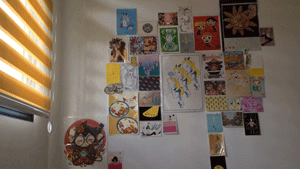
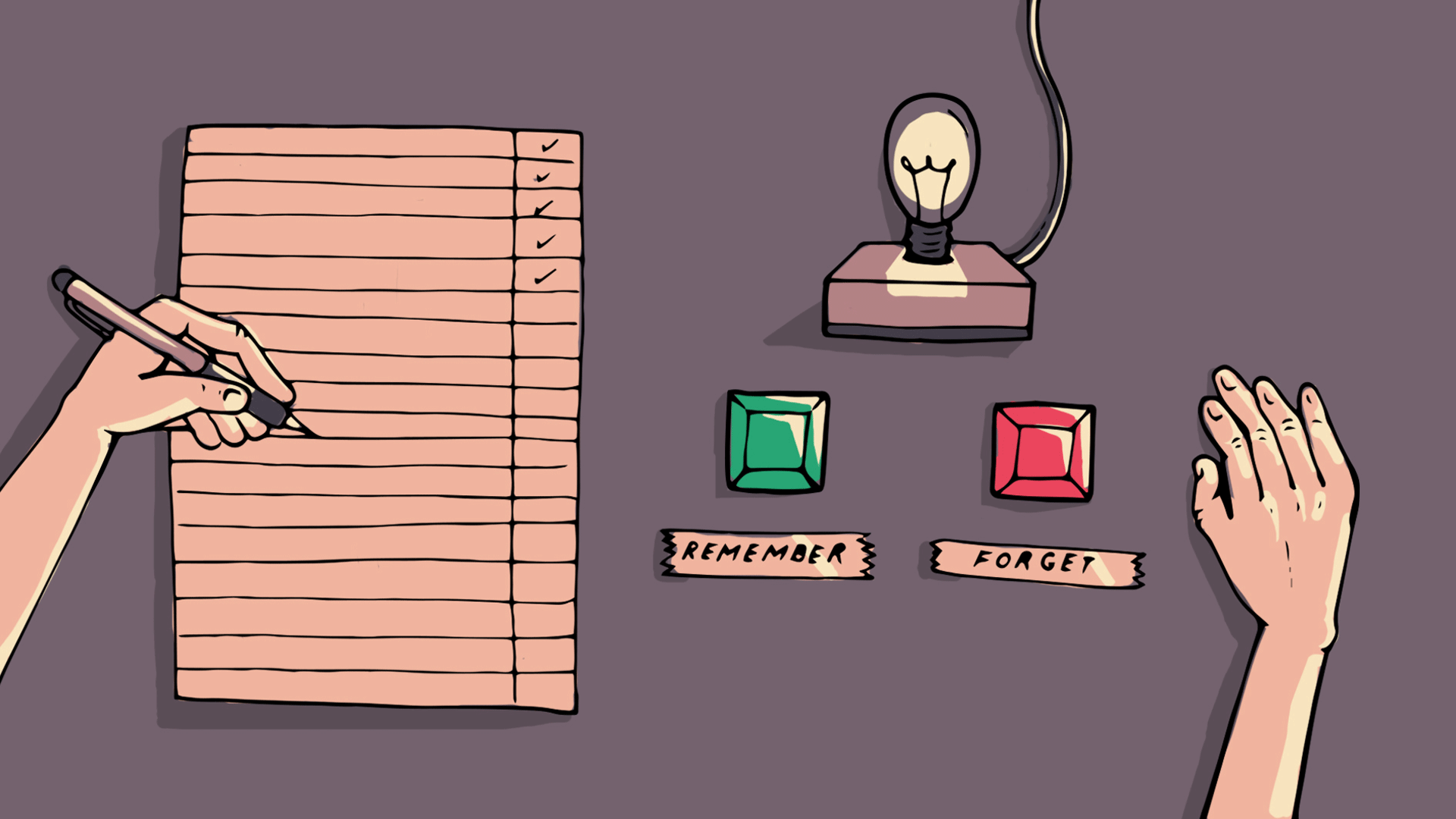
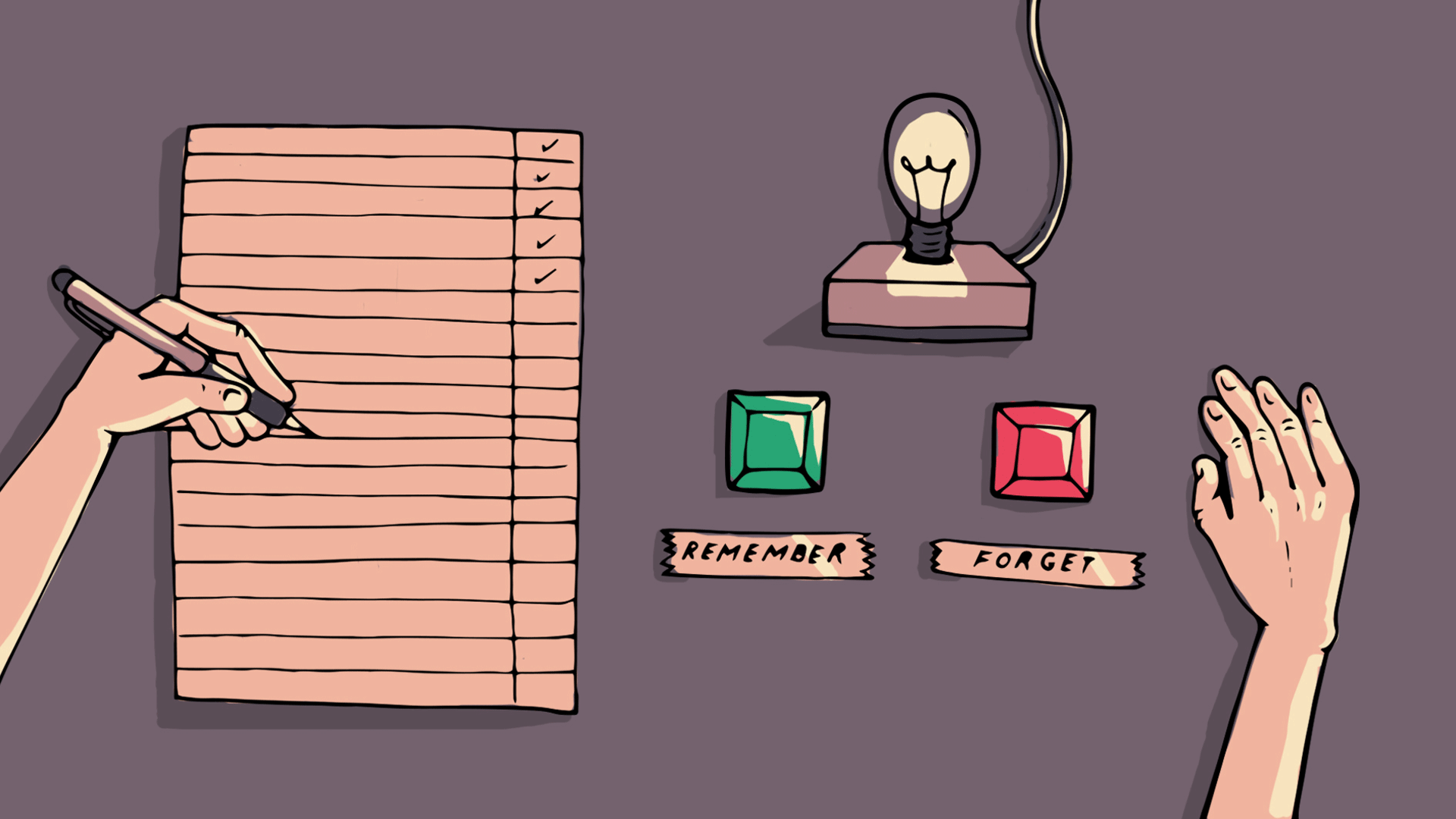
One of my initial ideas was to split the screen when showing the memories, having the above illustrations shown below it. I thought it would be better in conveying the narrative, showing the viewers that the person in the video is in charge of filtering Sihui’s memories. However, due to the aspect ratio of the video, it did not seem to work out very well.
In terms of sound, I used a mixture of sounds from www.freesound.org as well as experimenting with foley (the sounds which used this method are indicated), some of the sounds are also derived from the original video of the cinemagraphs. Since most of the sounds are literal, it was easy acquiring them.
Feedback & Improvement
In future, I would like to improve on my creation of cinemagraphs. Because of the nature of having a first-person perspective, there were moments where I was not able to use a tripod, resulting in shaky videos. As a result, the cinemagraphs were difficult to make, resulting in some ineffective ones.
